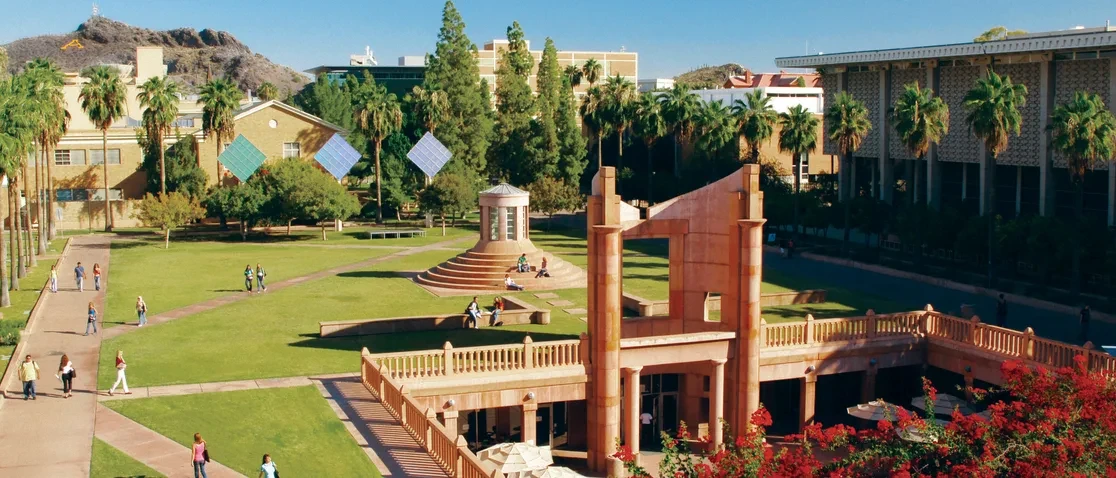

Arizona State University (Tempe campus)
Art History, MA
Study detals
: Master's degree : Art History, MA FAARTHISMA : Full time : 24 MonthRequirements
- Applicants must fulfill the requirements of both the Graduate College and the Herberger Institute for Design and the Arts.
- Applicants are eligible to apply to the program if they have earned a bachelor's or master's degree from a regionally accredited institution. In addition, applicants must have an undergraduate major or minor in art history or at least four upper-division art history courses in which a GPA of 3.00 or higher was maintained.
- Applicants must have a minimum cumulative GPA of 3.00 (scale is 4.00 = "A") in the last 60 hours of their first bachelor's degree program, or they must have a minimum cumulative GPA of 3.00 (scale is 4.00 = "A") in an applicable master's degree program.
All applicants must submit:
- graduate admission application and application fee
- official transcripts
- three letters of recommendation.
- one formal research paper for review
- statement of intent
- proof of English proficiency
Additional Application Information
An applicant whose native language is not English must provide proof of English proficiency (TOEFL 80 (no band below 20) (IELTS 6.5 at least 6.0 in all skills)) regardless of their current residency.
The statement of intent should be one page and indicate the objectives for graduate study.
Additional information
Program description
Degree awarded: MA Art (Art History)
The MA program in art with a concentration in art history is a comprehensive degree program that fosters critical understanding of aesthetics, production, patronage and consumption of art and provides a foundation of expertise in the history of art. The curriculum stresses intersections between disciplines, borders, margins, points of mediation, and technological developments throughout history and offers focused study in the areas of images and digital technologies, art in social and political contexts, and the histories and theories of visual culture. Classes cover many cultures, time periods and geographies, using multiple approaches and methodologies. Faculty mentor students in the application of theoretical and methodological approaches to research, advise them on their comprehensive literature review, and guide them as they determine their unique contribution to the field.
The School of Art galleries, the Ceramics Research Center and Archive and the ASU Art Museum support a robust schedule of public exhibitions and visiting artist and scholar lectures. These events offer students the opportunity to develop their knowledge and appreciation of contemporary art and culture while building a professional network. The program is enriched by partnerships with museums throughout the Phoenix metropolitan area and beyond, including an affiliation with the Los Angeles County Museum of Art and several other museums as part of the ASU-LACMA Fellowship program.
Program learning outcomes identify what a student will learn or be able to do upon completion of their program. This program has the following program outcomes:
- Students will propose original research within their focus area.
- Verbally communicate knowledge in the analysis of images and objects
- Will be able to write a thesis paper up to program capstone standards, which includes the development of a thorough bibliography and the extended examination of a single subject, conceptualized as a research question that engages with their field
Global opportunities
Global experience
More and more ASU graduate students are pursuing Global Education opportunities. Although participating in a Global Education program as a graduate student presents unique challenges, it has the potential to deepen the student's educational experience, connecting a meaningful international opportunity with their career aspirations.
Career opportunities
Graduates are prepared to initiate creative careers as artists, scholars and educators in the public and private sphere. Career opportunities depend on focused concentrations within the area and additional education or training per industry standards.
A graduate degree is essential for many professional positions; a master's degree prepares individuals to teach at the community college level, to practice and publish as an art critic or writer, to enhance their own practice as an artist, or to gain entry into employment in museums, archives, historical societies, art libraries, auction houses, publishing companies and academic presses. A doctorate is a necessity for employment as a university or college instructor and for responsible administrative and curatorial positions in the museum and publishing world.